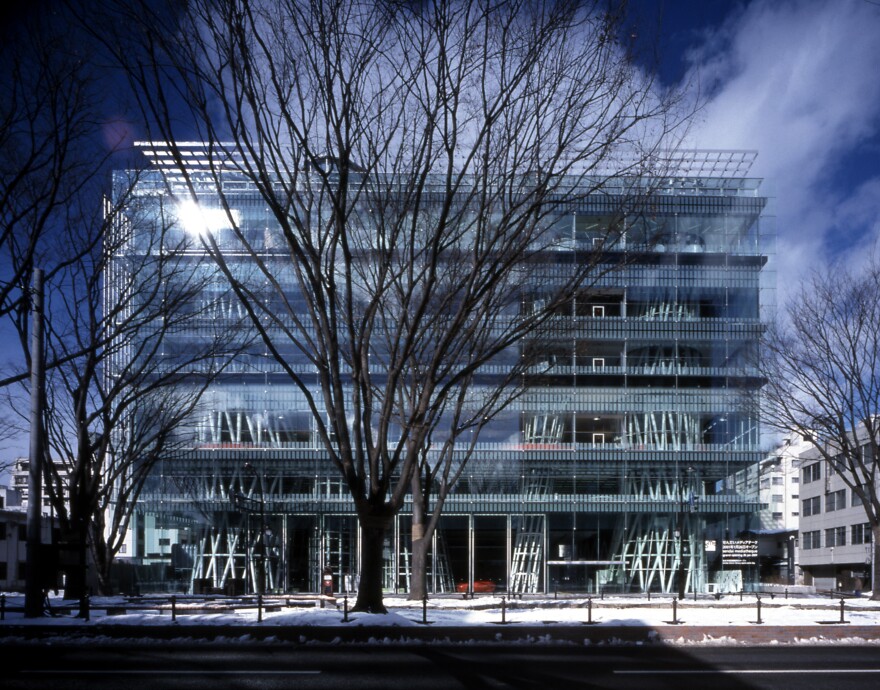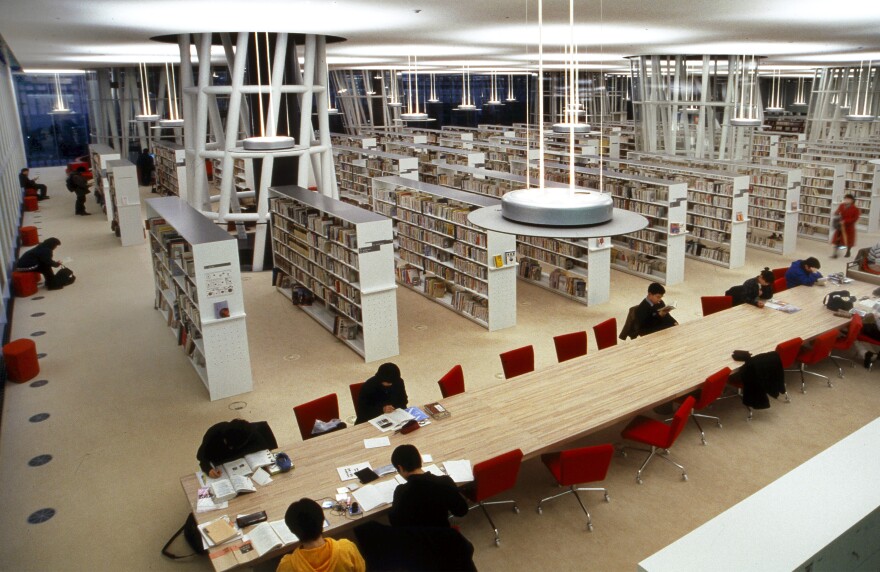Toyo Ito, a 71-year-old architect based in Japan, is the winner of the 2013 Pritzker Architecture Prize. The jury honored Ito for his more than four-decade career, in which he has created architecture that "projects an air of optimism, lightness and joy ... infused with both a sense of uniqueness and universality."

On the phone from his offices in Tokyo — the most densely populated city in the world — Ito says "air and wind and water," are the forces that drive him aesthetically. "These metaphors that I find in nature, that's always the inspiration for my architecture," he explains.
Ito's architecture creates fluidity between nature and humanity. When people enter his completely solar-powered stadium in Kaohsiung, Taiwan, for example, he wants them to be able to feel the wind and feel the air. Too often, he believes, urban environments feel intended to keep us apart. He wants to redesign them to bring us together.
"Because there are a lot of big cities in the world, people who live in cities have become more isolated than ever," he says. "I would like to use architecture to create bonds between people who live in cities, and even use it to recover the communities that used to exist in every single city."
To that end, Toyo Ito built a mediatheque — a kind of cutting-edge public library — in Sendai, Japan, back in 2001. It's a transparent cube, composed of tubes and platforms. University of California, Berkley, architecture professor Dana Buntrock says the latticed design is incredibly light and open.


"People wander in from the sidewalks, and they collect," she says. "Moms with strollers, kids just running down the sidewalk, kids from America who came to see the trendy building — all kind of mixed up together in this space."
This space, so welcoming and heterogeneous, was struck two years ago by the same earthquake that triggered the tsunami and Fukushima nuclear disaster. Videos shot from inside the Sendai Mediatheque during the earthquake as a suspended ceiling shakes ominously above them. But Ito's pioneering technology made the building flexible and resilient, says Sarah Williams Goldhagen, the architecture critic for The New Republic.
"The Mediatheque has these tubular-like things that look like trees, or look like waving grasses in the wind," she says. "They allowed the building to move with the earthquake and survive."
Goldhagen says Ito was the kind of student who was as curious about the latest in French philosophy as he was about structural engineering. His work attracted international notice for somehow managing to be both warm and avant-garde. Take the house he built for his sister in 1976.
Ito's sister was then a recent widow, with two little girls, Buntrock explains. He built them a house that was smooth and white, shaped, protectively, like the letter U. "He's written a book about it in Japanese talking about how much he wanted to be there to support his sister after she lost her husband, and just hold her in something that both was enclosed and felt like continuous space, felt like something you could move outward from."
After the girls grew up, Ito's sister decided to move. The family debated what to do with the house for a year — and they ended up tearing it down.

"And that was part of the mourning process, too," Buntrock says, "to be able to build the house but also to accept it was time to move on. And that's very much part of Ito-san, too. He's not as invested in his buildings being here after he's gone. Some architects really, really want that, you know? 'A hundred years from now, someone's going to walk in my fabulous bank or museum, and they'll know I was a great architect.' Ito doesn't really care about that."
Unlike so many of today's so-called "starchitects," Ito cares about personal connections. He has built his share of splashy icons: apartments, fire hydrant red, in Barcelona; the stunning solar-powered stadium in Taiwan. But he has also poured his aesthetic philosophy and technical expertise into a public kindergarten, a firehouse and a community center for the elderly.
"What he's trying to tell people is so hard for them to hear," Buntrock says, "that the building really isn't about the structure, the building isn't really about the environmental performance, the building is about the people inside of it. You'd think that'd be such an easy message. But in our practices right now, a sexy form goes a lot further than eight or 10 grannies that want to hang around your building on a Thursday afternoon."
Grannies actually matter to Ito. So do grandchildren. He has started teaching primary school students about architecture. The only time he switched to English in our interview was when asked what gives him pleasure in the wake of his Pritzker win.
"I enjoy teaching the primary students so much," he said, haltingly.
Perhaps teaching young children about architecture is the latest innovative way for Ito to build something profound. Something unexpectedly ephemeral, yet unexpectedly lasting.
Copyright 2020 NPR. To see more, visit https://www.npr.org. 9(MDAxNDQ2NDAxMDEyNzU2NzM2ODA3ZGI1ZA001))





















